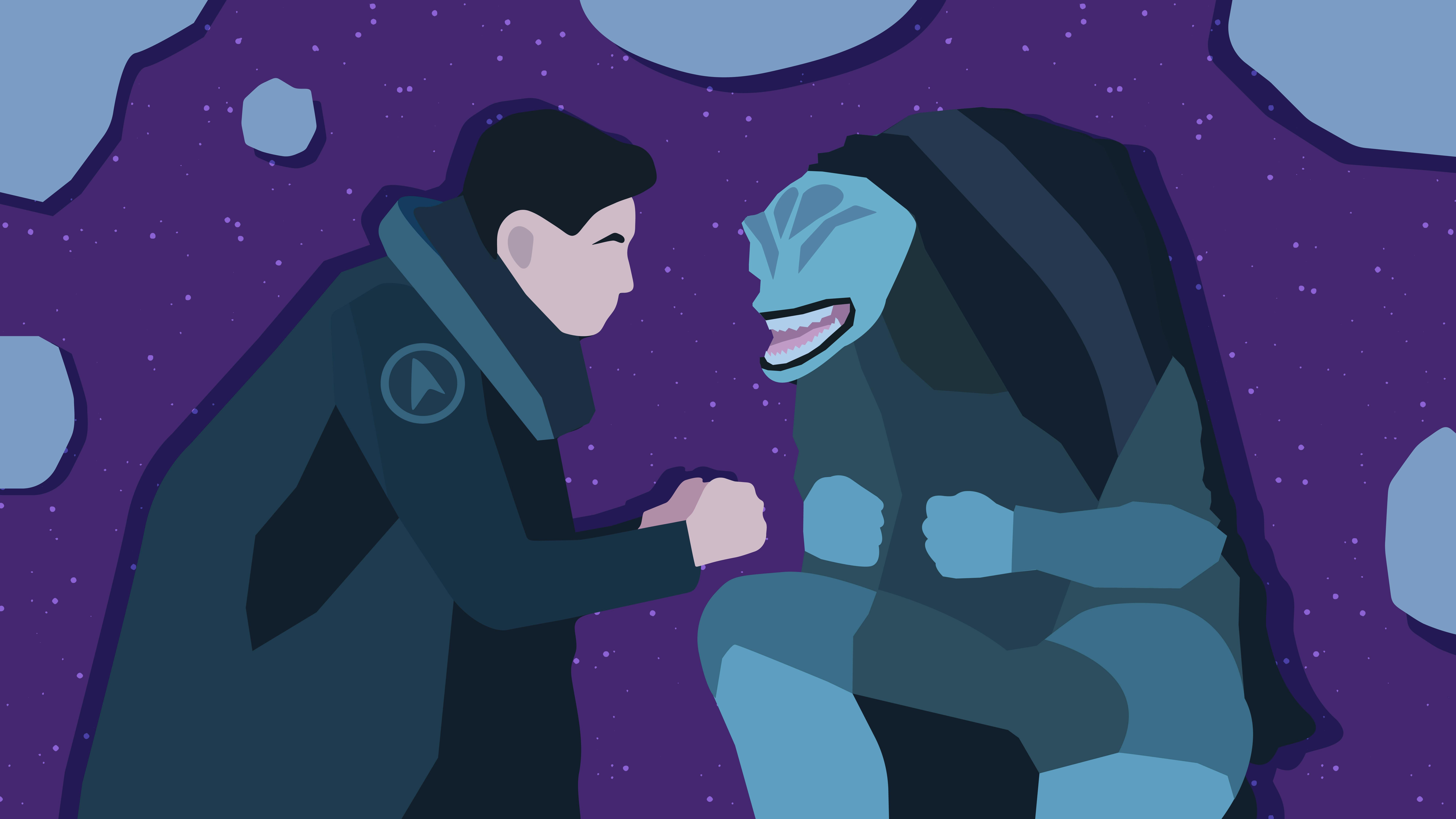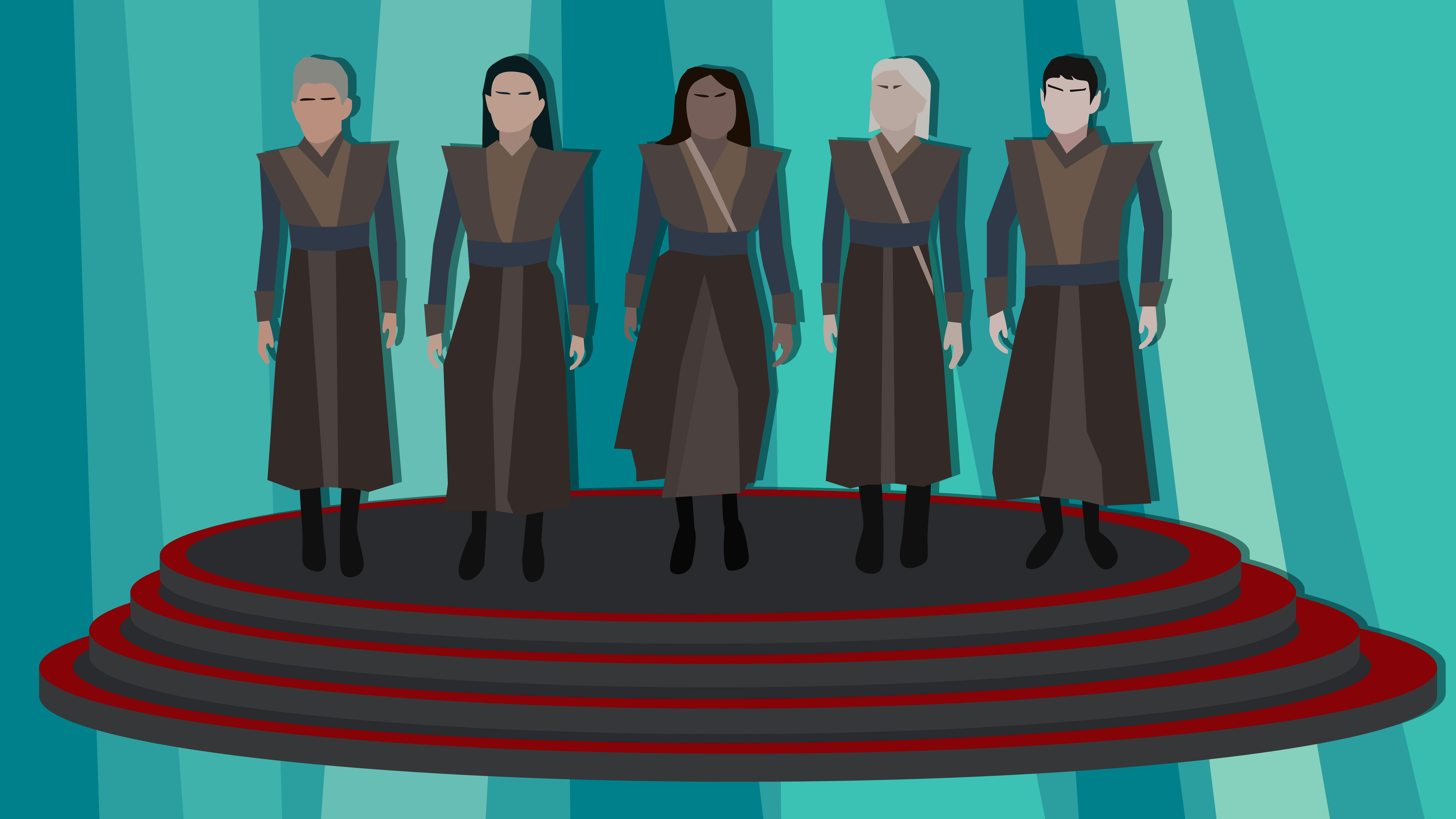Published Feb 15, 2024
A Closer Look at Benny Russell's Library
How a classic Deep Space Nine episode shines a light on the great works of Black American literature.
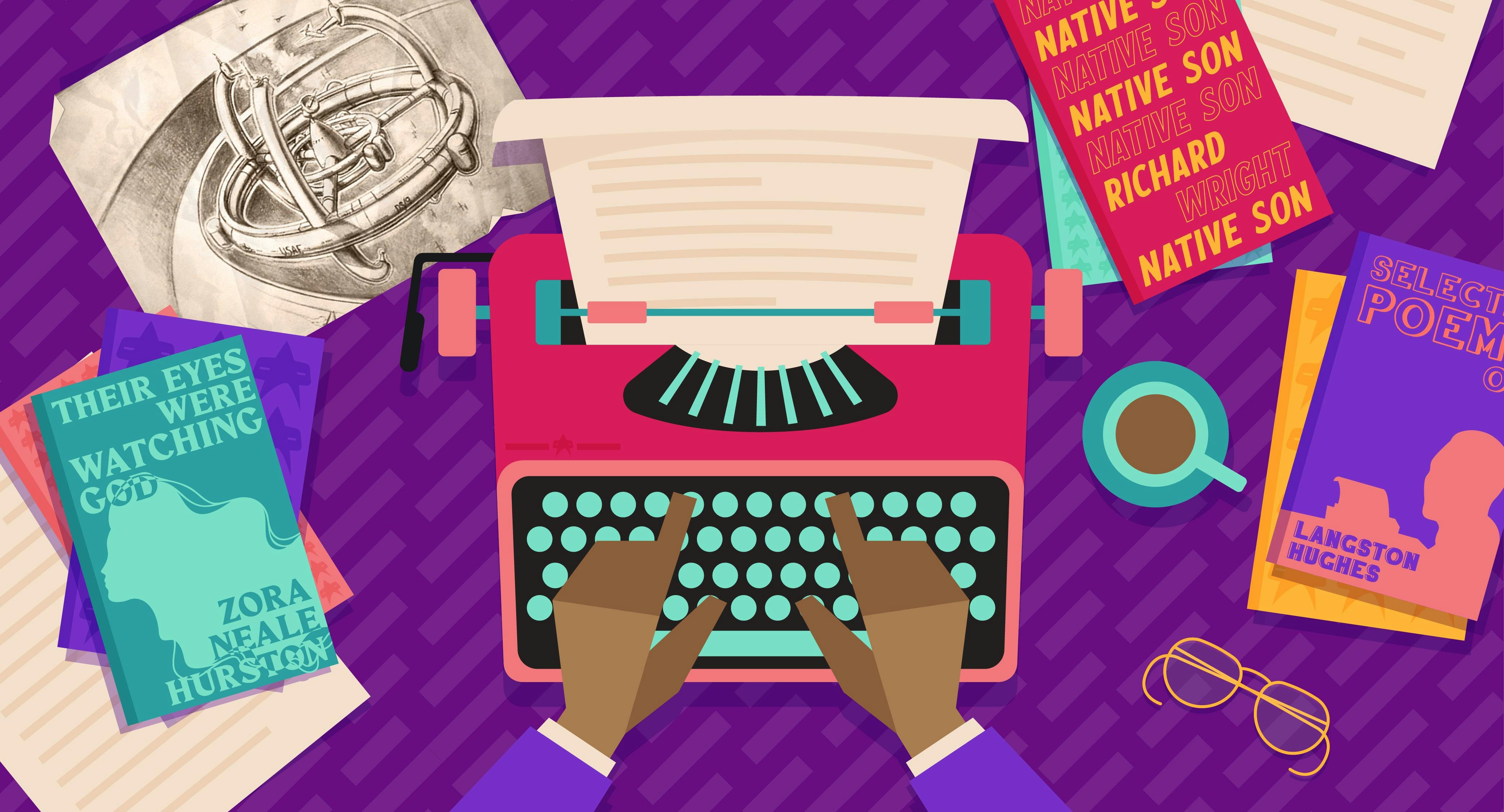
StarTrek.com
For a show named after a 24th Century space station, ’s most celebrated episode has a surprising setting. Trading in the Alpha Quadrant for 1950s New York, "" broke the mold in a radical way, resulting in one of the most powerful episodes in the entire series.
The episode owes its unusual setting to a dream vision experienced by Captain Sisko, in which he becomes Benny Russell, a science fiction writer living in Harlem in 1953. In a twist, which blurs the lines between dream and reality, we discover that Russell is writing a story about a futuristic space station known as Deep Space 9, captained by one Benjamin Sisko. Although Russell believes this story is the best he has ever produced, his efforts to get it published are thwarted by the racism of the era, leading to a tragic conclusion.
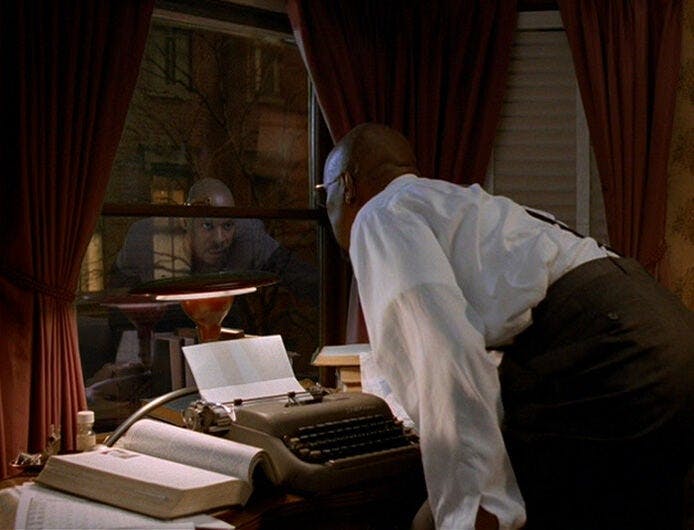
"Far Beyond the Stars"
StarTrek.com
As an episode dealing directly with the racial prejudices of American society, "Far Beyond the Stars" became something of a passion project for its star, Avery Brooks. Not only did he appear in every scene of the episode, playing the dual role of Captain Sisko and Benny Russell, but he also directed it. After Deep Space Nine ended, Brooks reflected on this episode as "the most important moment for me in the entire seven years."
Brooks’ work on this episode was also singled out by his fellow cast members. At a Star Trek Las Vegas panel, Cirroc Lofton paid tribute to the attention to detail Brooks brought as a director. "A lot of thought went into that episode on his part," Lofton reflected. One detail which he singled out was the books in Benny Russell’s apartment, which "were strategically placed and have purpose and meaning behind them." Lofton explained that the books were ones which Brooks "wanted to leave behind in the record, that he wants people to read."
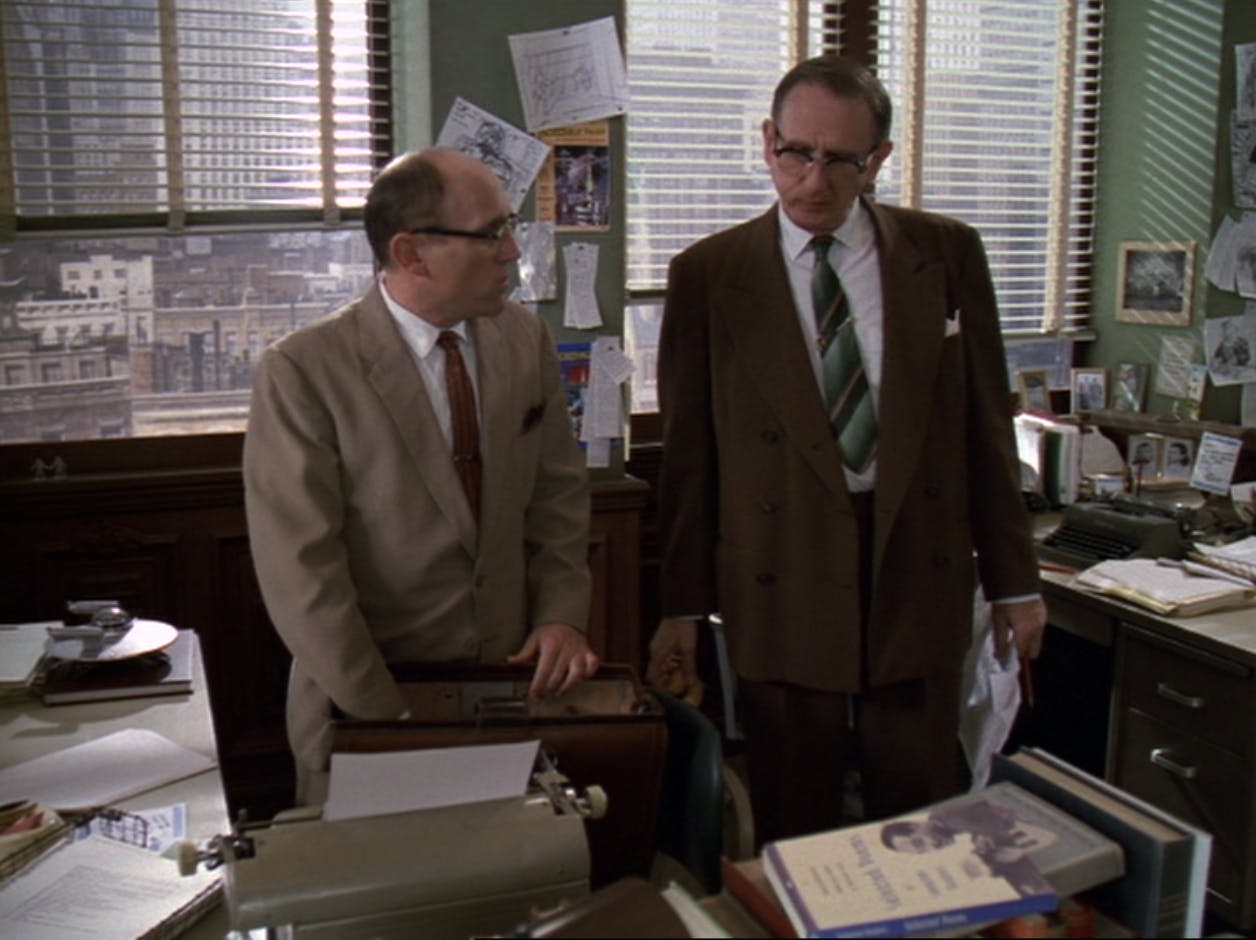
"Far Beyond the Stars"
StarTrek.com
Despite the attention Brooks paid to Benny Russell’s library, many of these details are blink-and-you-miss-it moments. But given the episode’s esteemed place within the Star Trek canon, as well as the continued relevance of its theme of racism, it is worth taking a closer look at some of these books and what they can teach us about Benny Russell’s story.
One writer that clearly has a dominant place in Benny Russell’s library is Langston Hughes. A copy of his collected poems appears at least twice in the episode, strategically placed, I suspect, by the clever props department in both Benny Russell’s apartment and his office.
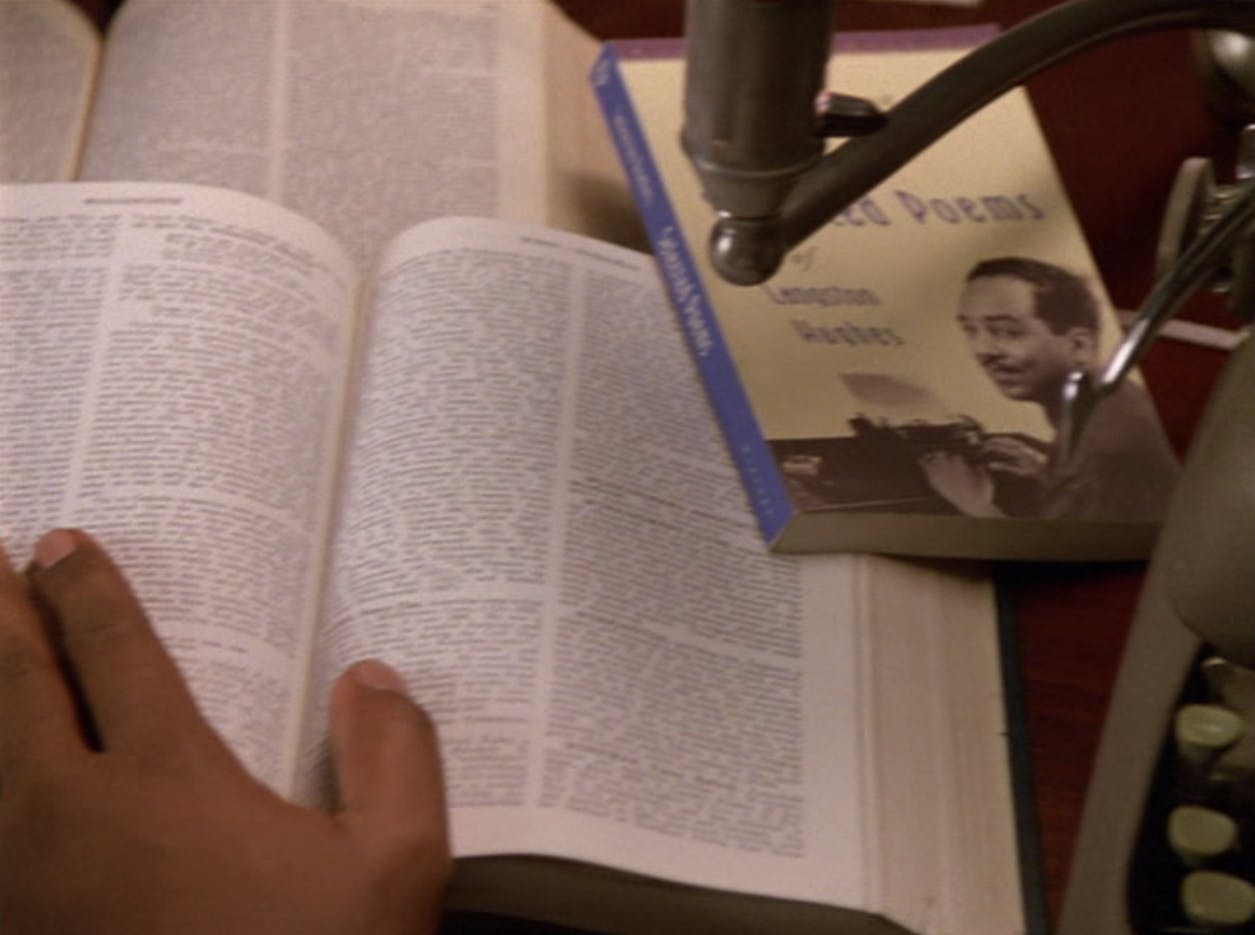
"Far Beyond the Stars"
StarTrek.com
The inclusion of Hughes makes sense, given the episode’s Harlem setting. Hughes lived in Harlem during the period this episode is set in, and he is regarded as the figurehead of a literary movement named after the neighborhood – the Harlem Renaissance. One of his most famous poems is even titled "Harlem," and it resonates strongly with Benny Russell’s story.
The poem opens with a question, "What happens to a dream deferred?" It continues with more questions — "Does it dry up” or "fester"? — before concluding with the ominous line "Or does it explode?"
Given the poem’s title of "Harlem," Hughes seems to suggest that the phenomenon of the "dream deferred" is something particular to this neighborhood, which was predominantly Black American at the time. This speaks to Benny Russell’s experiences, as his own dreams of success as a writer are "deferred" due to the prejudices of the era. At one point, Russell’s editor tells him to "put [his story] in a drawer for 50 years or however long it takes the human race to become colorblind."
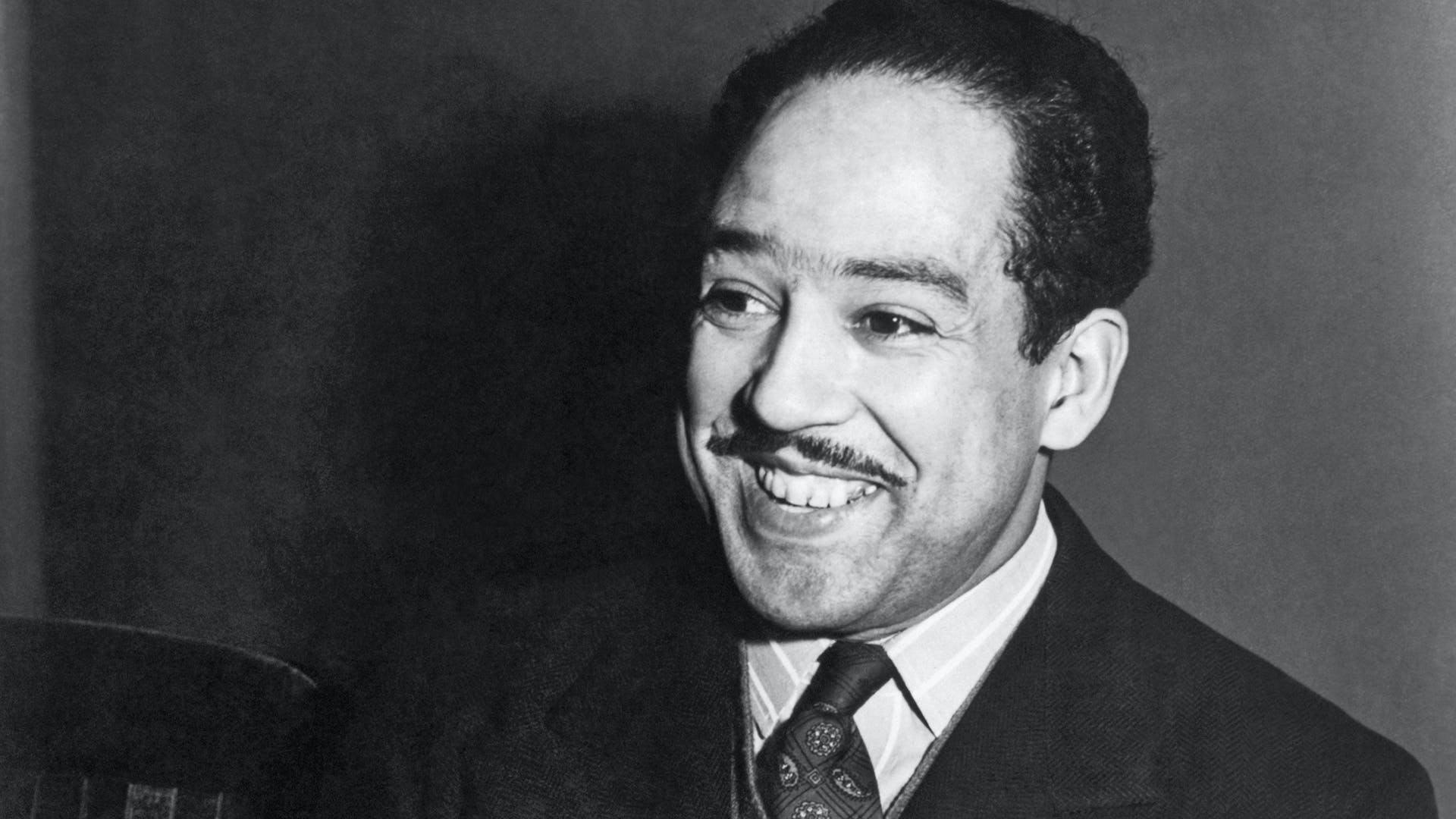
Langston Hughes
Library Of Congress
Just as Hughes’ poem suggests, Benny Russell feels trapped by having his "dream deferred." Everywhere he looks, he is confronted by questions, with no hope of answers or a way forward. His own ending mirrors that of the poem, as he suffers the "explosion" of a nervous breakdown.
Benny Russell’s experience is also closely related to that of another Harlem writer of the time — Zora Neale Hurston, who is best-known for her 1937 novel Their Eyes Were Watching God.
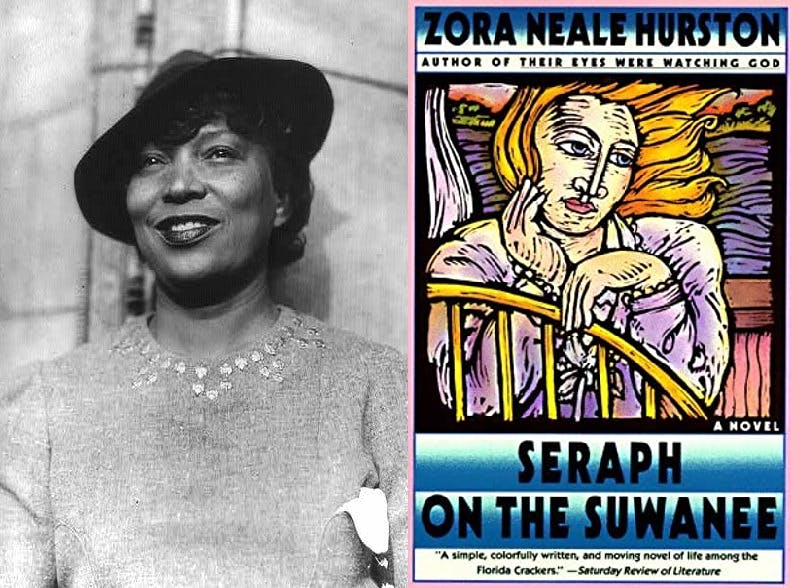
Zora Neale Hurston and the cover of her book, Seraph on the Suwanee
Library of Congress; Harper Perennial Modern Classics
Despite her success as a writer, Hurston often had trouble getting her work published. Later in her career, she submitted two manuscripts featuring African-American characters to her publisher — both of which were rejected. It was only when she wrote a new manuscript, featuring white characters, that her publisher agreed to go ahead with the book.
This real experience directly mirrors that of Benny Russell in "Far Beyond the Stars." His Deep Space 9 story is rejected by his editor for featuring "a colored captain," and he is given the ultimatum, "You want me to publish it? Then make the captain white."
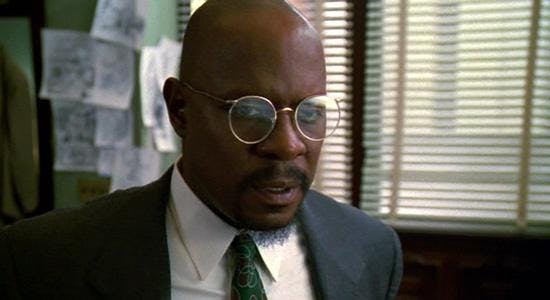
"Far Beyond the Stars"
StarTrek.com
Though none of Hurston’s books are visible in the final cut of the episode, Benny Russell does mention her name during a discussion with his editor, suggesting that she too is part of his library.
Another writer Benny Russell mentions is Richard Wright, and, more specifically, his novel Native Son. This book is one of those in Russell’s apartment, though it is only partially visible on-screen for a split second.
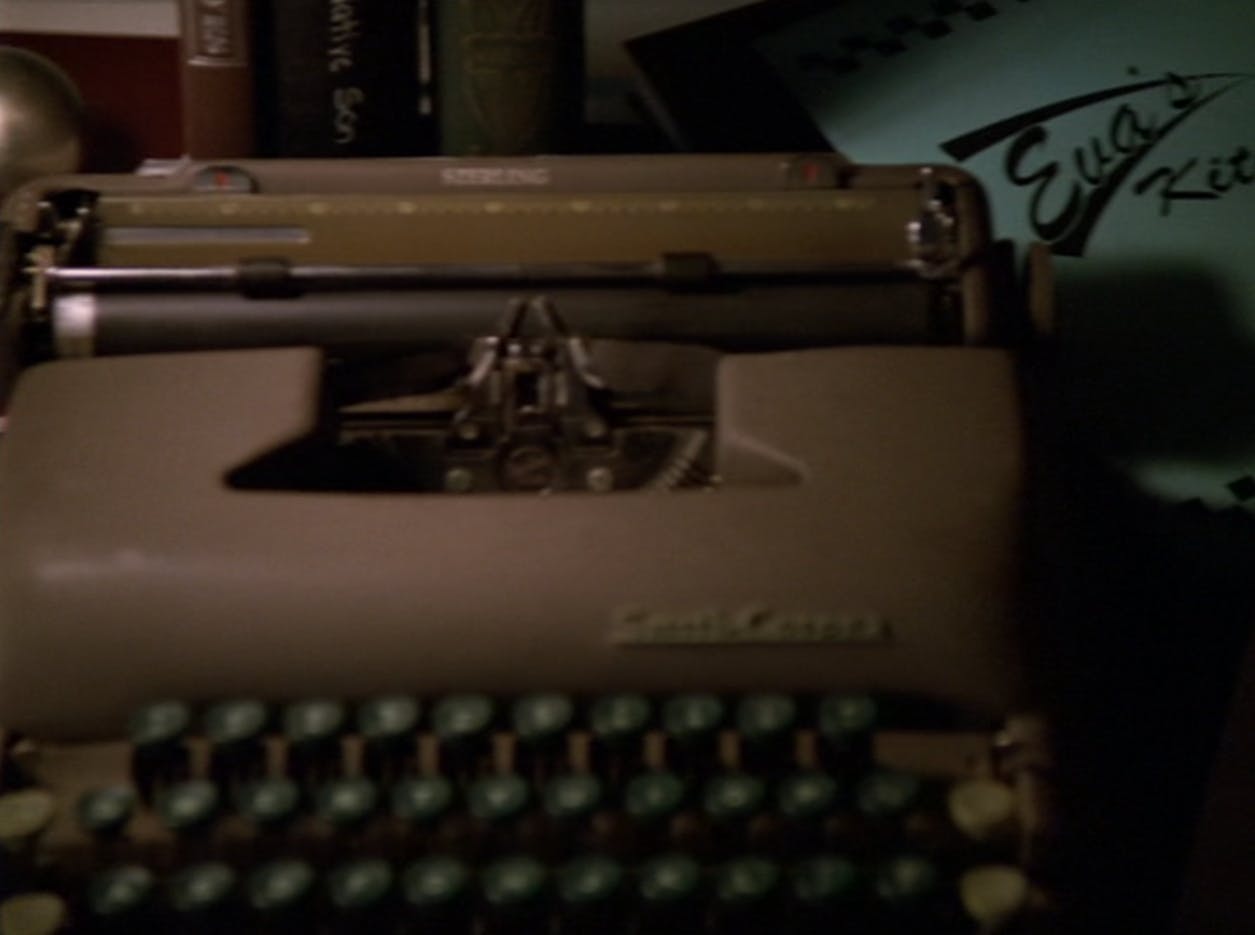
"Far Beyond the Stars"
StarTrek.com
Published in 1940, the book was controversial at the time, and remains a challenging read today due to its graphic violence. However, the themes of the novel align closely with those of "Far Beyond the Stars."
Specifically, Wright’s Native Son suggests that there were only two ways African-Americans could respond to their mistreatment in society at the time — to accept it, or to become outlaws waiting for the axe to fall.
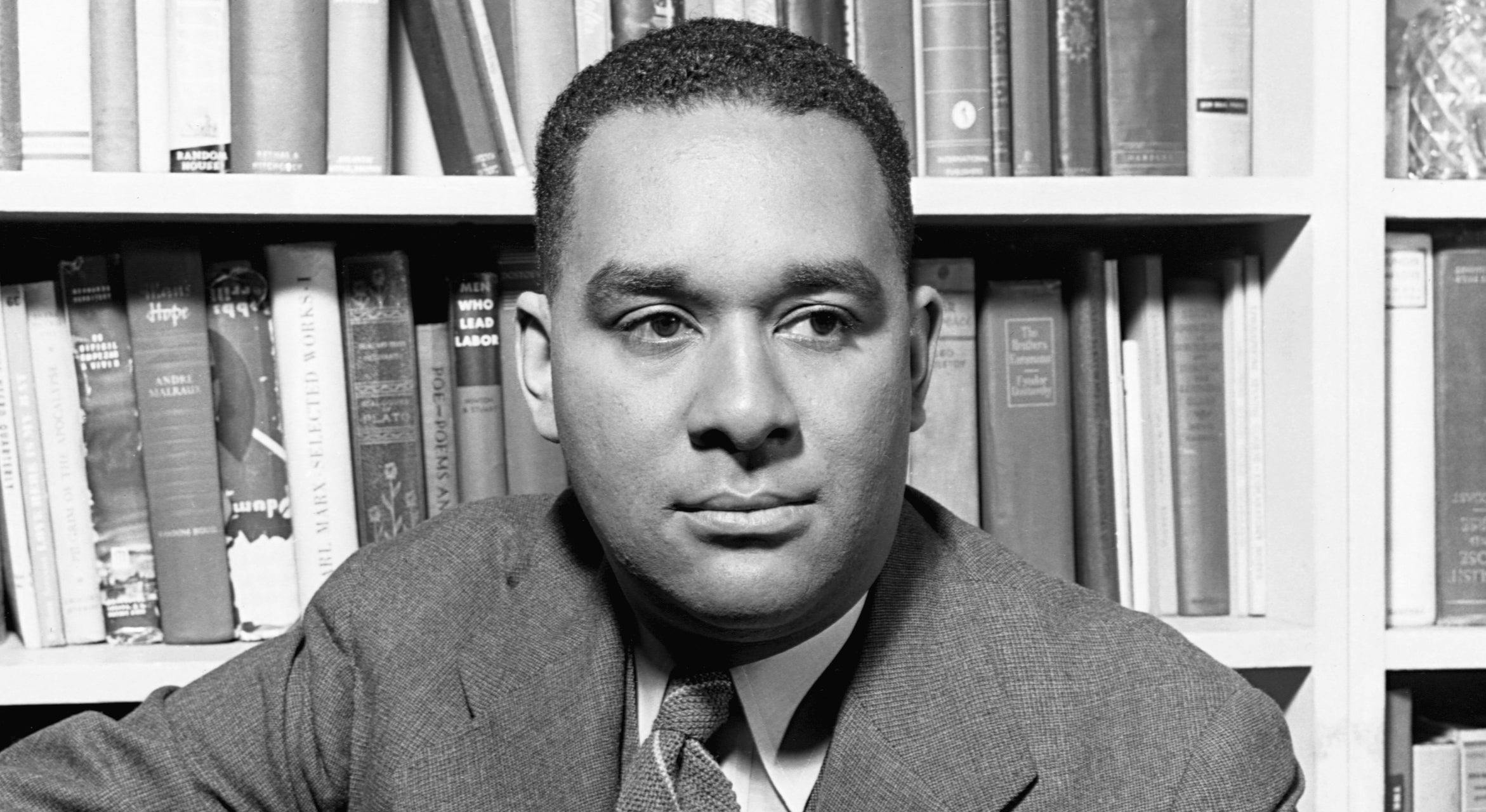
Richard Wright
Library of Congress
This duality is reflected in the episode by two friends of Benny Russell — Willie Hawkins and Jimmy.
Although Willie is a professional baseball player, he continues to live in Harlem, as he knows that he will not be welcomed in the more opulent "uptown" areas of New York. Despite this injustice, Willie seems to accept his situation.
Jimmy, on the other hand, responds to his position in society by living outside of the law. He chooses to become his "own boss" by turning to a life of petty crime. Although Jimmy’s criminal activities are relatively minor, he nonetheless meets a tragic end, just as Wright suggests is inevitable in Native Son.
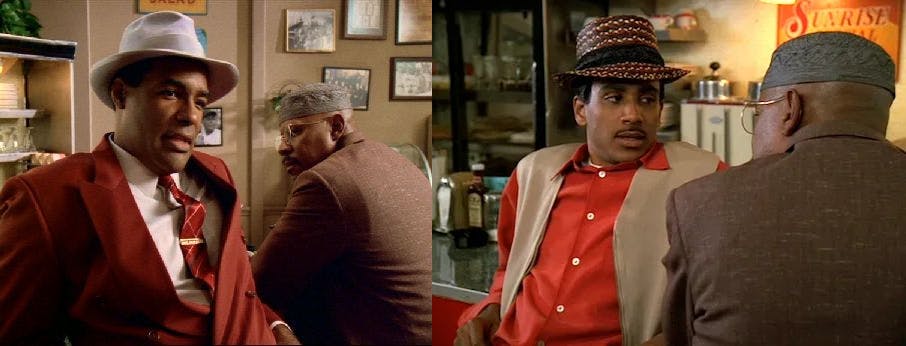
"Far Beyond the Stars"
StarTrek.com
What is most fascinating about this duality, however, is Benny Russell’s position within it. He begins the episode more like Willie — quietly accepting his situation. However, by the end, he seems to have moved closer to the other side of the spectrum, "I'm tired of being calm," he shouts. "Calm's never gotten me a damn thing."
Despite this, Benny Russell is unable to ever come down firmly on one side or the other. He does not want a life of quiet acceptance, but nor does he want violence or criminality. It is this inability to live within the prejudicial confines of 1950s American society which ultimately leads to his breakdown.
We never find out exactly what happens to Benny Russell beyond this point, as after the breakdown occurs, Captain Sisko wakes up. Back on Deep Space 9, it seems as if his experiences as Benny Russell were all just a fantasy. Similarly, when the episode is over, we as viewers return to our own realities, leaving Benny Russell behind as if he were nothing more than a dream.
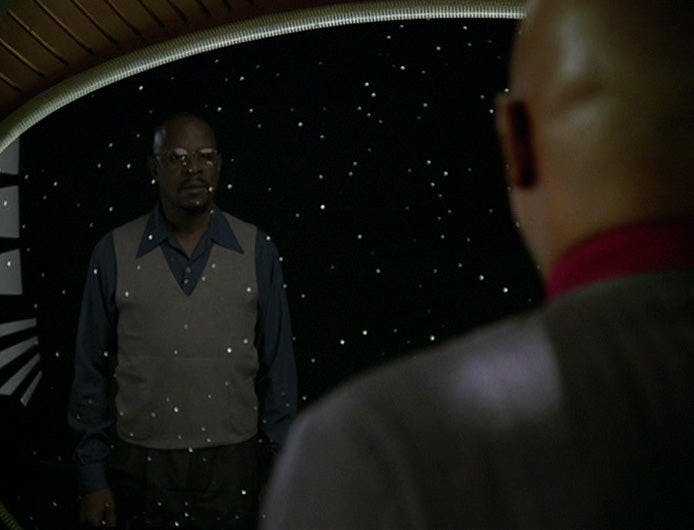
"Far Beyond the Stars"
StarTrek.com
Perhaps that is why Avery Brooks "wanted to leave behind in the record," a library for Benny Russell. Because by doing so, he could make the character and his experiences live a little longer in the viewer’s imagination.
Benny Russell is described in "Far Beyond the Stars" as "someone without much hope." And yet, at the same time, he dreams of a more fair and equal future through his science fiction stories, just as Star Trek aspires to a similar vision in its storytelling.
However, to get to such a future in reality, it is important for all of us to understand the historic wrongs of society and to have empathy for those who have experienced injustices. For that, Benny Russell’s library may not be a bad place to start.
Star Trek History: Far Beyond the Stars


